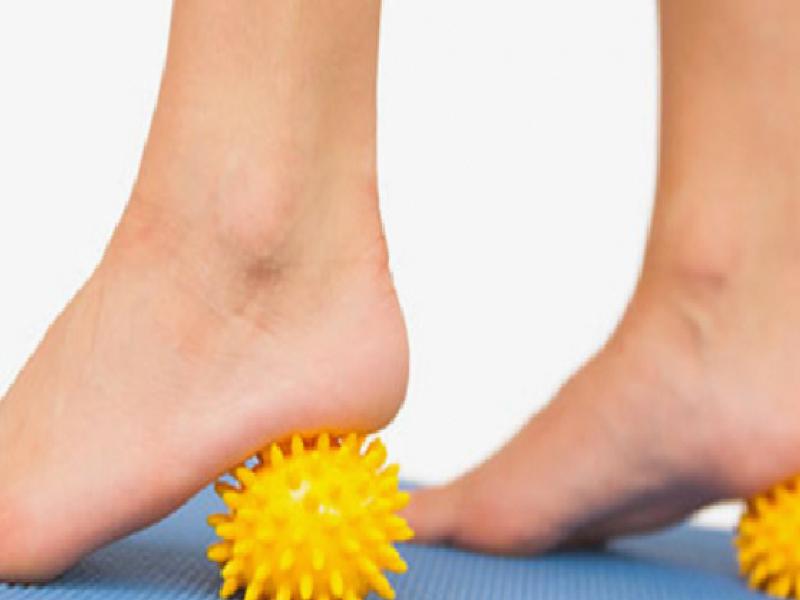
Heel spur, one of the most common problems, affects life negatively. So what are the symptoms of heel spurs? How is heel spur treated? Physical Therapy and Rehabilitation Specialist Associate Professor Ahmet İnanır gave valuable information on the subject.
What is Heel Spur? How does it occur?
Do you have an annoying pain under your heel? Is walking a torture for you? Can’t step on your heels when you wake up in the morning? Then, although it is said that you probably have a heel spur, this pain is related to the condition called palntar fisitis. The reason for the formation of heel spurs is due to the excessive stretching of the thick membrane (plantarfasia) on the sole of the foot that covers the bones. It is often the result of long-term strain on muscle and connective tissue. Repetitive stress caused by walking, running or jumping on hard surfaces is a common cause of overweight heel spurs. Heel spurs are a health problem that occurs as a result of chronic damage to the plantar fascia membrane on the sole of the foot. It is not a bone disease. Thanks to the dimple called the long arc of the foot, which is located on the inside of the foot, the loads on the foot are distributed in a stable manner, preventing excessive loads on the soft tissues and bones. The plantar fascia, which supports this arch, becomes very tight due to standing too much, the collapse of the arch of the foot, long long walks, and the use of bad and wrong shoes. As a result of this injury (chronic injury), thickening of the plantar fascia and soft tissue edema occur, especially where it attaches to the heel bone. This rheumatic condition that occurs on the sole of the foot is called plantarpha sitis. As the disease progresses, this membrane begins to thicken and chronic injuries begin to progress at the point where it attaches to the heel bone. It tries to minimize the tension by forming new bone in this part of the body. When the formed bone structure forms a pointed shape, it is called heel spur.
Associate Professor Ahmet İnanır continues his words as follows;
What are the symptoms of heel spurs?
The most valuable symptom is pain in the foot. This pain is especially pronounced in the morning. When you get out of bed in the morning, because of this pain, the person has difficulty in stepping on his heel for a while. As the disease progresses, morning pains begin to manifest themselves all day. Shoes with heels and hard soles become difficult to wear. In more severe patients, these pains may continue even at rest.
How to diagnose heel spur?
If the heel spur is in its immature stage, it can be diagnosed by examination. In addition, edema and thickening of the basement membrane can be detected with MRI and sometimes ultrasound imaging. Diagnosis can also be made with a simple X-ray. However, there is a valuable point that foot pain and heel spur can be the first symptom of inflammatory spinal rheumatism. It can also be seen in patients with Fibromyalgia syndrome. Especially if there is pain behind the heel and it is resistant to treatment, this disease should be considered and definitely investigated.
What are the treatments used in heel spurs?
The goal in the treatment of heel spurs is to reduce the pressure on the foot, control pain and inflammation, promote tissue beautification and increase the flexibility of soft tissues. Rest. Plenty of rest can help reduce the pressure on the foot and reduce the inflammation and associated pain and swelling in the affected area. Ice application. Ice application can help reduce pain and swelling by suppressing inflammation. Annular insoles are used by placing them inside the shoe to relieve pressure on the heel. Night splint, Stretching training, Physical therapy, Shock absorbing sneakers can help relieve pressure on the soft tissues of the foot and reduce pain. Anti-inflammatory Medications can help reduce swelling by suppressing the inflammatory process. Extracorporeal shock wave therapy (ESWT). High-powered sound waves can be directed to the relevant area, helping to heal the damage to the plantar fascia. Radiofrequency can be applied. Prolotherapy. By injecting dextrose into the damaged soft tissue, it contributes to the beautification process. Tissue healing is accelerated by injecting PRP into the heel area. Acupuncture, laser beams stimulate the body’s smoothing and repair systems. In rare cases, surgery may be required to remove the heel spur. In many cases, other treatments are sufficient and surgery is not necessary.

